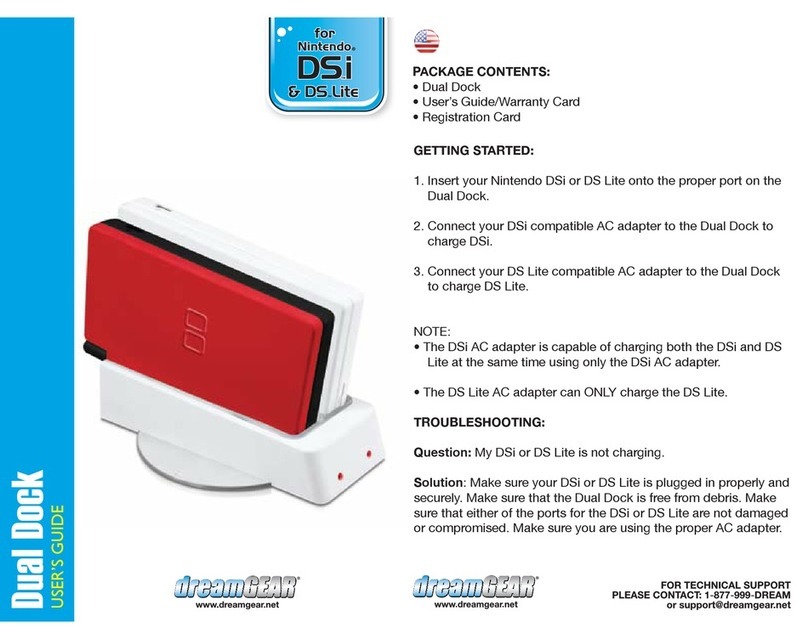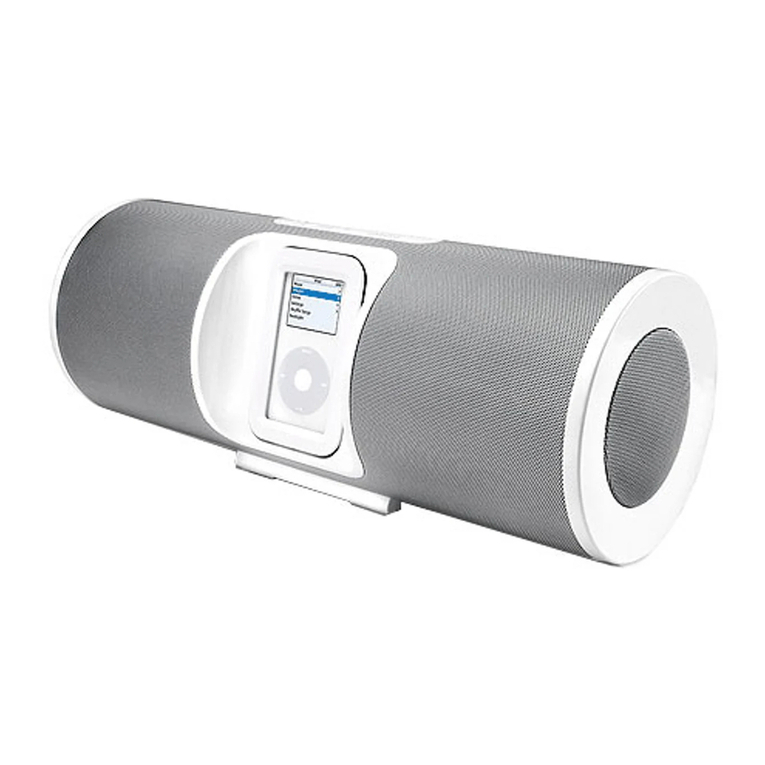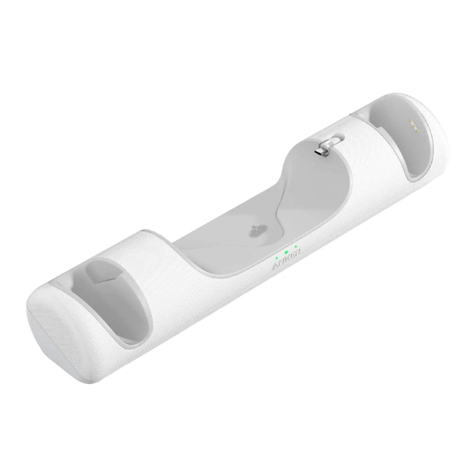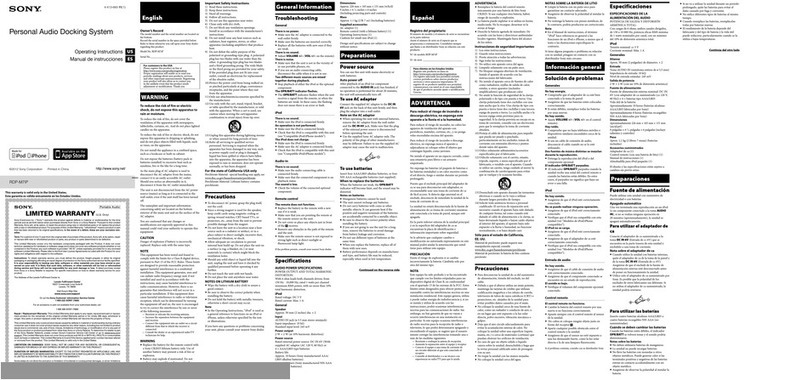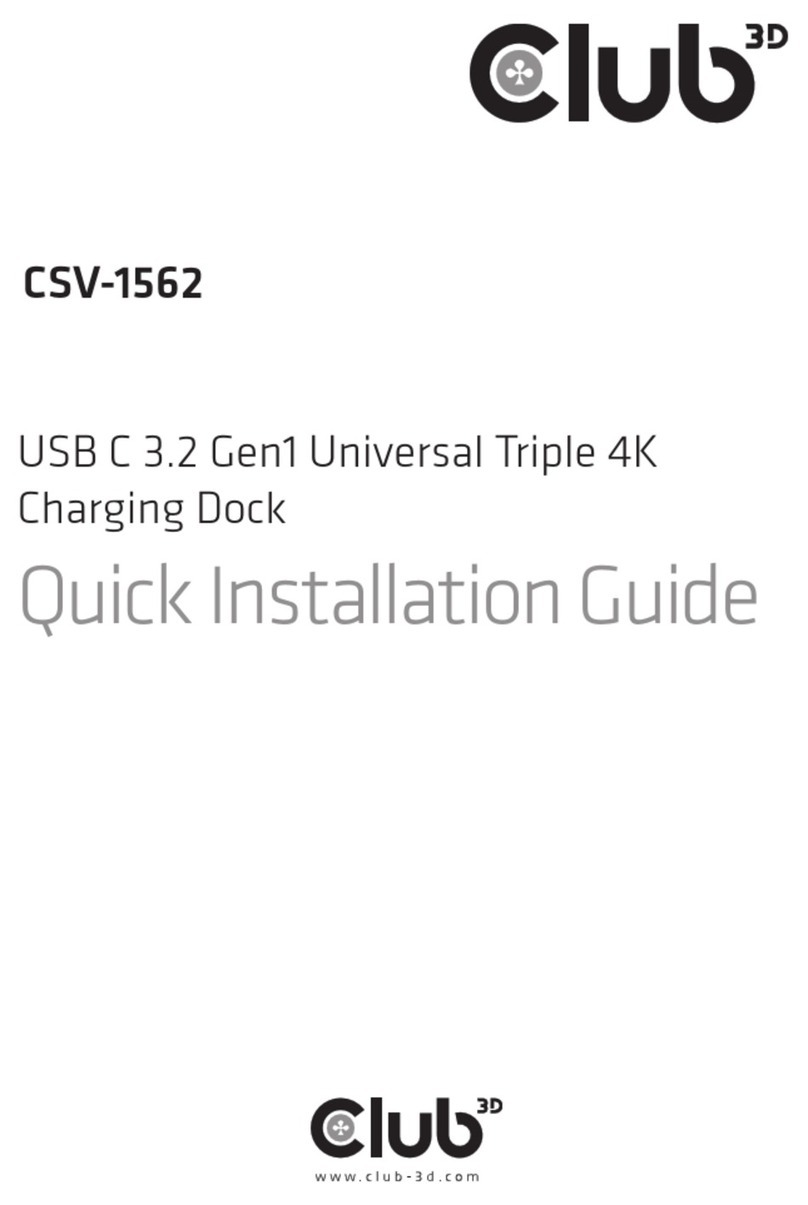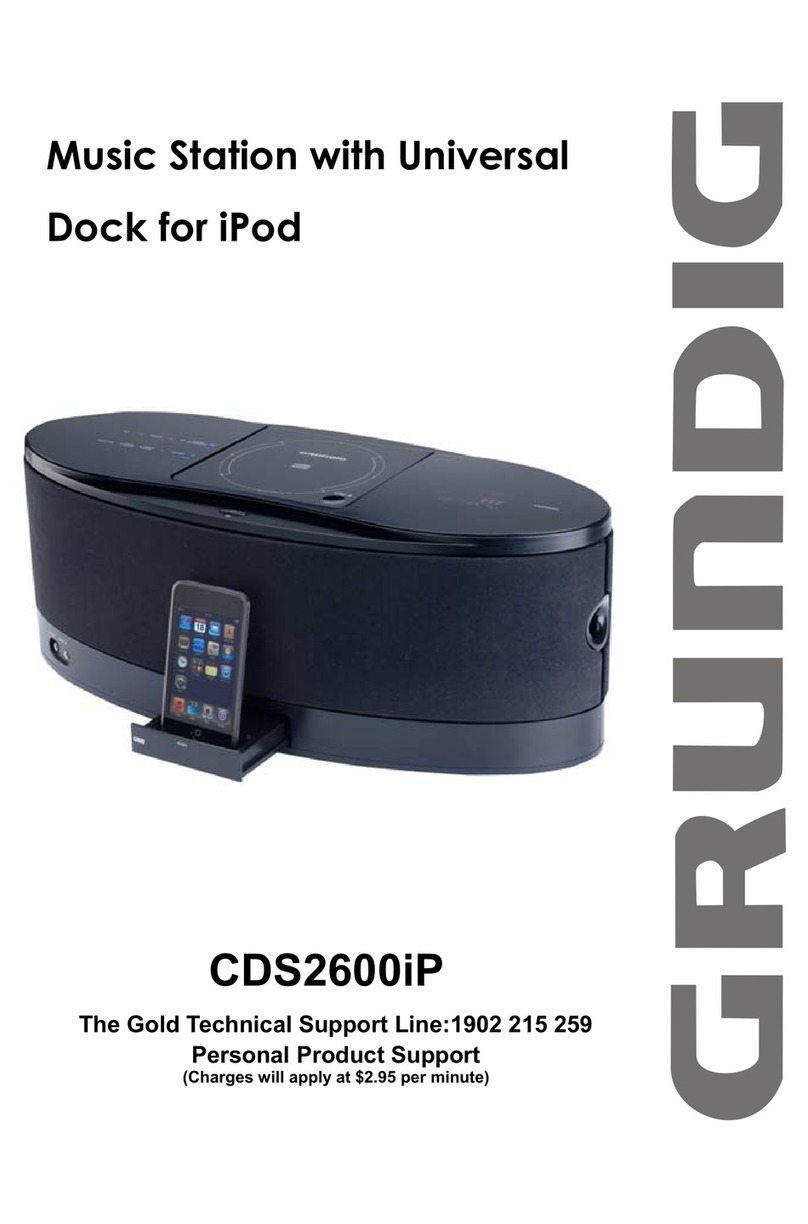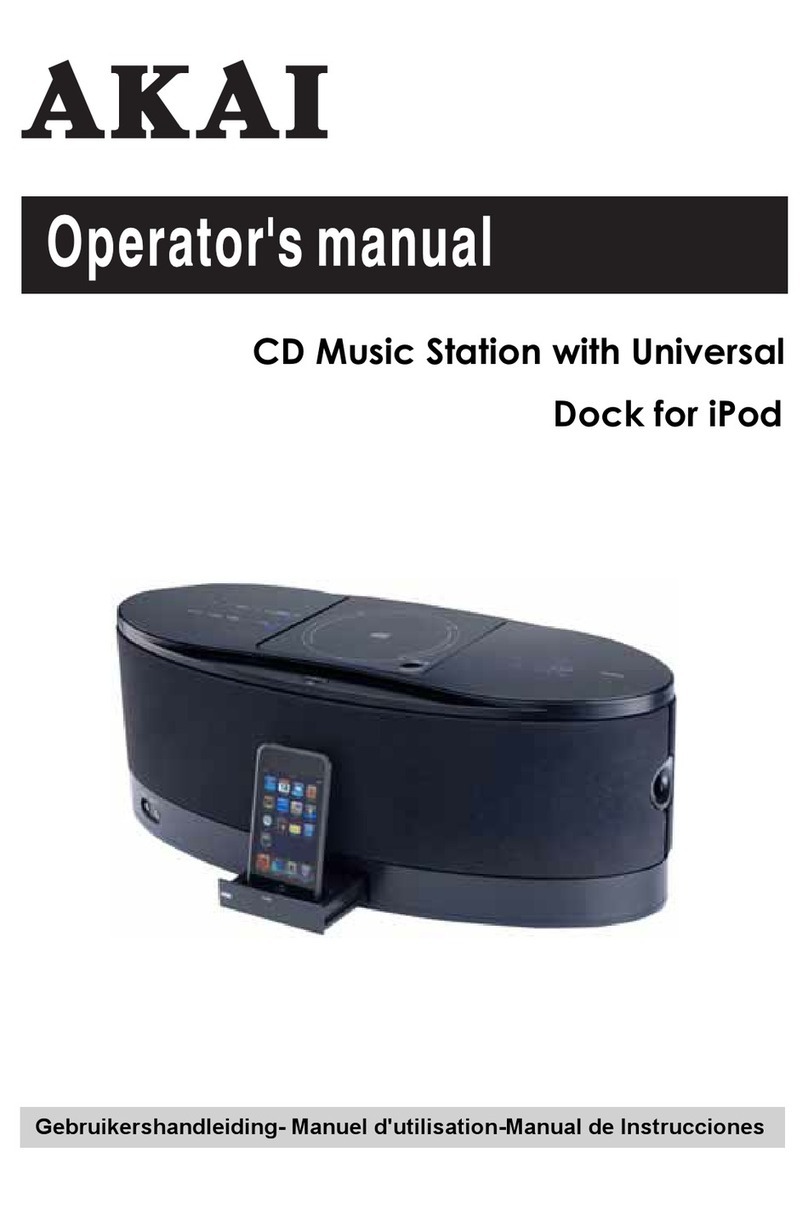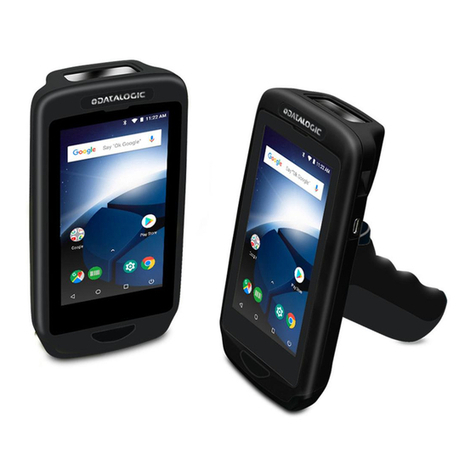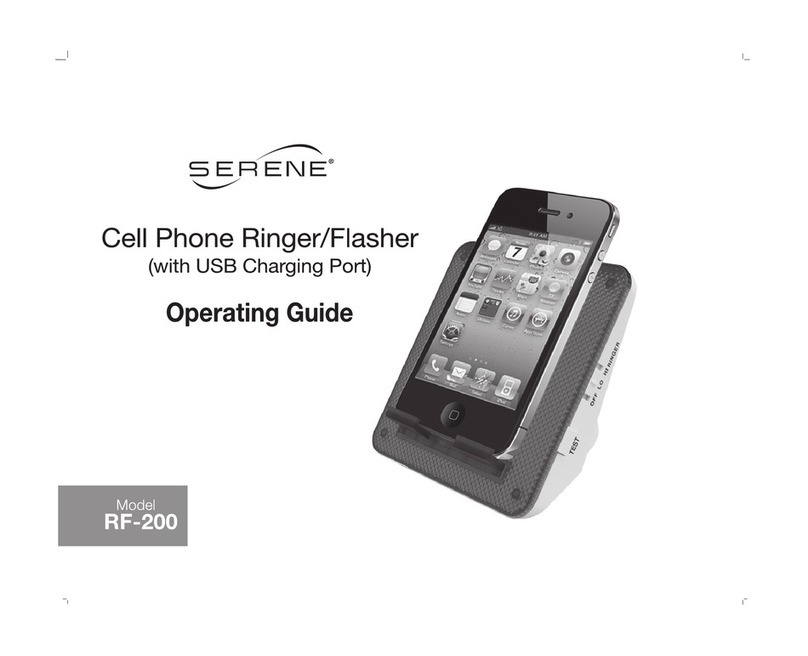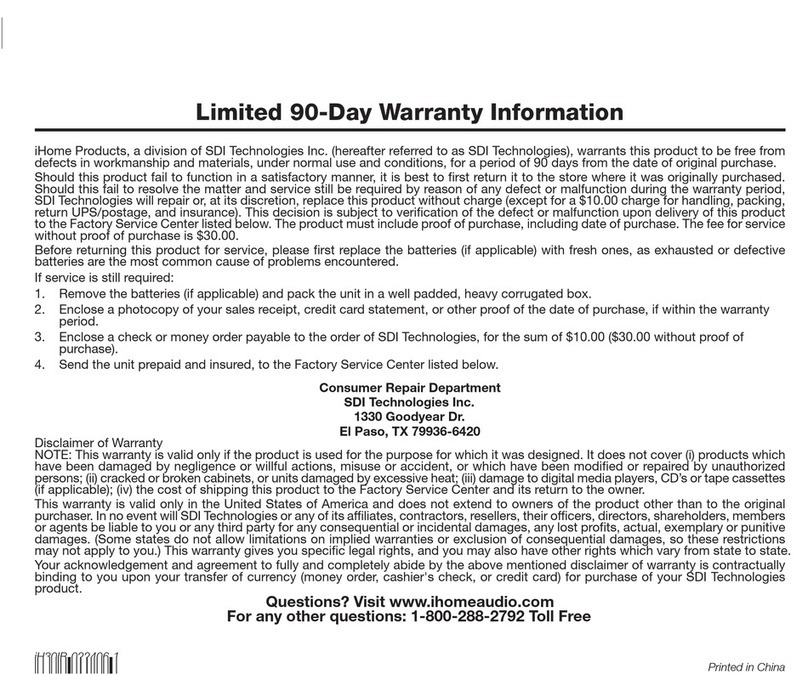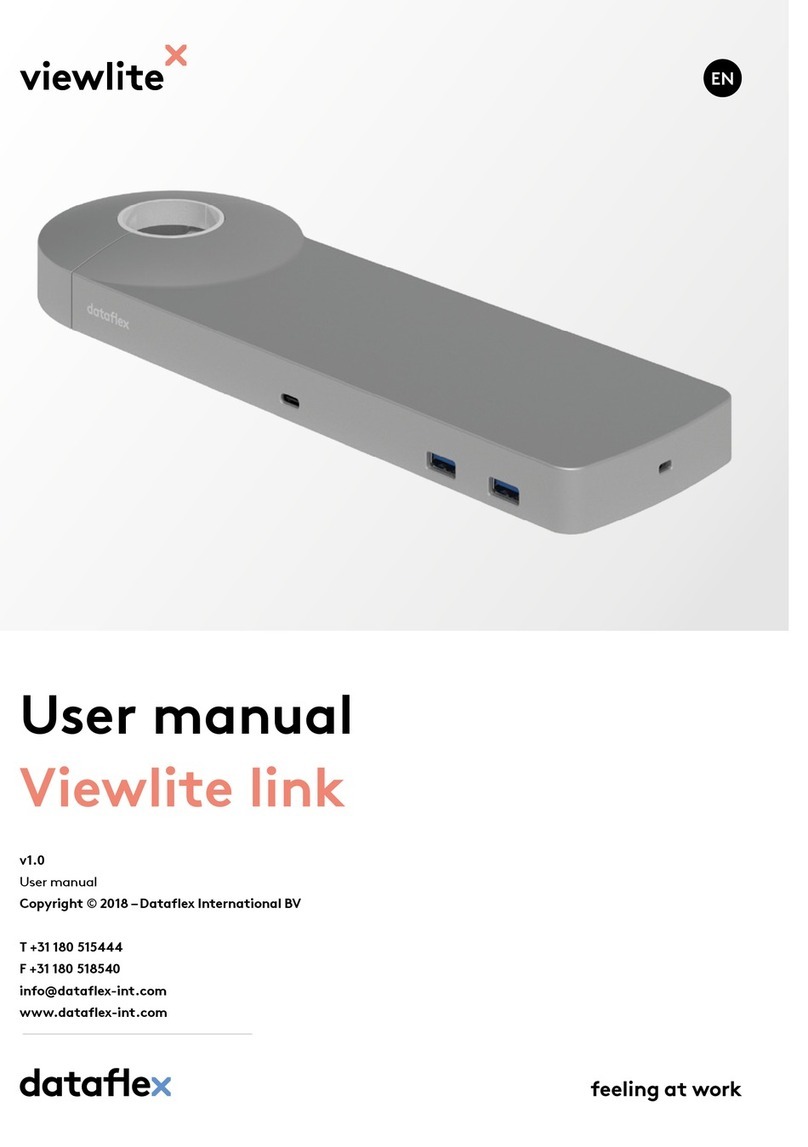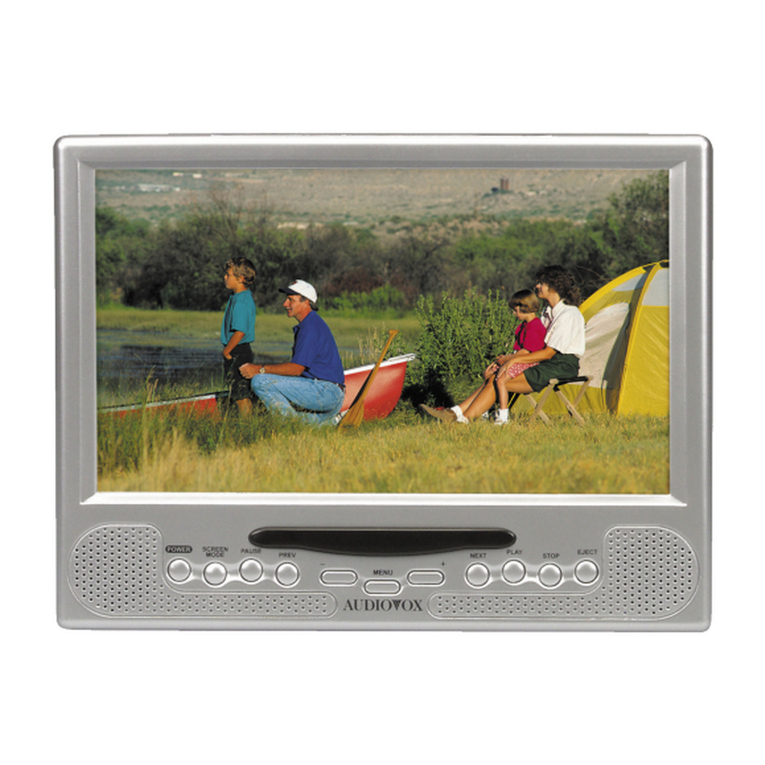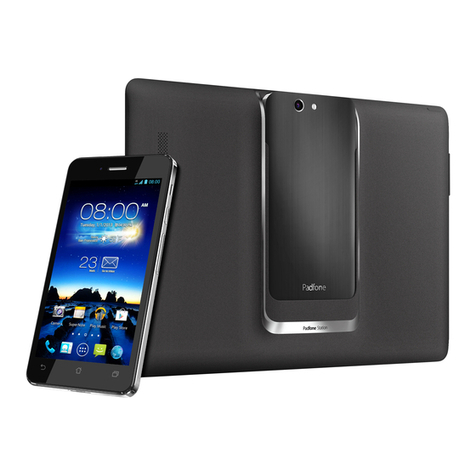Bestmade Products 4'x8' Dock Guide

Page 1 of 21

Page 2 of 21
Tip In Dock Instructions
Table of Contents
1. Dock Assembly and Set-Up
1.1 Quick Start
1.2 Installing Dock Legs
1.3 Positioning Hinges
1.4 Installing Foot Pads
1.5 Installing Cross Braces
1.6 Installing Docks into the Water
1.7 Sample Layouts
2. Safety
2.1 Introduction
2.2 Safety Definitions
2.3 Personal, Operating, and Installation Safety
2.4 Mooring and Docking Watercraft
3. Specifications
3.1 Specifications Introduction
3.2 Specifications Table
3.3 Rated Load Capacity
4. Inspection and Maintenance
4.1 Inspection and Maintenance Introduction
4.2 Annual Inspection Requirements
4.3 Storage Procedure

Page 3 of 21
1. Dock Assembly and Set-Up
1.1 Quick Start
Your Bestmade Docks have been designed to be very simple and straight forward to
assemble. Each dock has an aluminum frame, (2) cedar, Surestep, or PVC deck panels,
and either 2 or 4 dock legs with foot pads. Use this Quick Start diagram to get set up
very quickly.
Image 1
The following tools will be needed for dock installation…
•4 ft level
•Combination wrench - 3/4”
•Combination wrench - 9/16"
•Combination wrench - 1/2"
•Utility gloves
•Marine grade anti-seize (recommended for use on all fasteners)
1.2Installing Dock Legs
The next step is to install the leg holder set bolts and nuts. As we can see in Image 2,
the 1/2" hex nut slides into the leg holder channel and the 1/2" x 1-1/4" long hex bolt
spins into the nut. There are a pair of set bolts and nuts used on each dock leg.

Page 4 of 21
Image 2
As we can see in Image 2, the dock leg slides through the leg holder and is secured with
the set bolt. To adjust the dock leg up and down, simply loosen the pair of set bolts,
raise or lower the dock, and then re-tighten. Using a 3/4" wrench, a good rule of thumb
to ensure the set bolts are tightened properly is to spin 1 complete turn past hand tight
when the leg has been pushed up against the back of the leg holder.
In most dock systems, the first dock section (closest to shore) is considered a free-
standing section and uses 4 legs. All additional dock sections as the system goes from
shore out into the water use 2 legs, as they essentially share the previous section's legs
by close proximity. The exception to the 2 leg rule on subsequent dock sections is when
dock orientation changes. For example, suppose a system was 4 dock sections long with
the first 3 sections creating a straight dock of 4' wide by 24' long. If the 4th dock section
of the system was turned 90 degrees and centered on the end of the 24' (creating a "T"
layout), this 4th dock section would need 4 legs.
1.3 Positioning Hinges
To connect one dock section to another without getting into the water we will use the
tip in hinge system. The tip in hinge "hook and pin" system (Image 3) consists of (4)
hinge plates per dock connection. There is (1) hook right plate, (1) hook left plate, and
(2) pin plates.
Image 3
All dock systems are installed by starting with the first dock section right at shore and
working out into deeper water installing one dock section at a time using the previously
installed sections as a walkway. If there is a dock connection to be made, there will be a
hinge set to make the connection. Hence, there would typically not be a hinge placed at

Page 5 of 21
the very start where we first step onto the dock, or at the very end of the dock where
no further sections are to be joined.
For a given dock connection, the hook hinge plates will always be placed on the end of
the installed section closest to shore while the pin hinge plates will be placed on the
beginning of the next section to be joined.
To position the hook and pin hinge plates on the frames we'll use the track system.
Each hinge plate is connected to its frame by using (2) 5/16" x 5/8" long carriage bolts,
washers, and hex nuts. (1) carriage bolt slides into the upper track, (1) slides into the
lower track, and then the hinge plate is secured between the dock frame and the
washers with hex nuts.
Start by ensuring that the dock frame is right side up. To do this, check to see that the
recessed decking area is on the top side of the dock as shown in Image 4.
Image 4
Positioning Hinges on Straight Docks
When placing the hook right and hook left hinge plates, the hooks should always be
pointing upward toward the sky (Image 3). Each hook plate is to be positioned as in
Image 5 with the edge of the hook hinge plate aligning with the frame edge. By taking
care to line up the designated edge of the hook hinge plate with the frame edge, we can
be ensured that the hinge spacing will be correct.
Image 5

Page 6 of 21
Prior to installing the pin hinge plates, the thumb screws which will later be used when
installing the dock must be placed as shown in Image 6. It is important that these
thumb screws are placed prior to fastening the hinge pin plates to the dock frames. The
end of the thumb screw should be flush with the diameter of the pin, but not protruding
outward.
Image 6
When installing the pin hinge plates, the end of the pin will bottom out on the frame of
the upper track. Hence, by taking care to ensure the pin end is lined up with the frame
edge as shown in Image 7, the pin spacing will always be correct. Because the pin hinge
plates are symmetrical, there is no designated right and left version like with the hook
plates, so orientation is not important.
Image 7

Page 7 of 21
Positioning Hinges When Changing Dock Orientation - Wider to Narrower
The methods in Images 5 and 7 of positioning the hinge plates works well for all straight
dock connections (for example a straight 3 section dock where all sections are
connected end-to-end) and for when a dock connection does not change width
(example: 4ft dock connected to 4ft dock, 8ft dock connected to 8ft dock, etc.) Working
from shore outward into the water, if the dock system A) goes from a wider dock to a
narrower dock (example a 6ft wide dock to a 4ft wide dock) or B) changes direction
(example a "finger dock" that comes off the side of a dock section) we must manually
measure the placement of the hook hinge plates.
Looking at scenario A first, let's suppose that we had a straight dock system that was 6ft
wide. If for the last section we wanted to add a section that was narrower at 4ft wide,
the distance between the hook hinge plates would have to be set up for use with the pin
hinge plates on the last dock section of 4ft wide dock. When outfitting the end of the
6ft wide dock with the hook hinge plates, we would need to measure the distance
between hook hinge plates to fasten them in the correct position (Image 8).
Image 8
* When connecting from an 8ft or 6ft wide dock to a 4ft wide dock the distance
between hook plates should be 45-3/4".
*When connecting an 8ft wide dock to a 6ft wide dock the distance between hook
plates should be 69-3/4".
Looking at scenario B, the same rules apply. Let's suppose we had a straight dock
system consisting of 3 dock sections 8ft long each (24ft total) with dock1 being closest
to shore, dock2 in the middle, and dock3 at the end. If we wanted to run a 4ft wide
"finger dock" off the side of dock2, we'd need to mount a hook hinge set to the side of
dock2. The distance between the hook hinge plates mounted to dock2 (Image 8) would
need to be set to match the pin hinge plates on the 4ft wide "finger dock".
Positioning Hinges When Changing Dock Orientation - Narrower to Wider
Working from shore outward into the water, whenever dock width goes from narrower
to wider a Tip Adapter must be used.

Page 8 of 21
Let's suppose we were creating a "T" dock layout using 2 sections of dock, with dock2
being turned 90 degrees and centered on the end of dock1 (Image 9).
Image 9
Image 10
On the end of dock1, the hook hinges would be placed normally as shown in Image 5.
Because the pin hinges would not be able to properly mount to dock2, we need to use
the Tip Adapter. The shore side of the Tip Adapter will get the pin hinges by fastening
the plates via the track system with the back end of the pin being flush with the Tip
Adapter (Image 11), while the water side of the Tip Adapter will fasten permanently to
dock2 via (3) 5/16 x 1-7/8" long carriage bolts, washers, and nuts. The (3) carriage bolts
will slide in the lower track of dock2 and connect through the 3 holes in the Tip Adapter
(Image 11).

Page 9 of 21
Image 11
1.4 Installing Foot Pads
Image 12
In Image 12, we see the foot pads. On soft lake bottoms, dock legs will begin to sink
under the weight of the dock. To minimize this effect, you will be provided with foot
pads as required. To install the foot pad, simply slide it over the bottom of the dock leg
and tighten the set-bolt. The foot pad has a "ski edge" on each end. This is to allow the
dock to more easily exit the soft material on the lake bottom. When removing the dock
at season's end, the docks are removed one at a time in the reverse order in which they
were installed. To remove a section, the dock hinge is unlocked, the frame is lifted
slightly, and the dock is dragged backward so it can be carried back to shore via the
remaining dock sections. The "ski edge" should be lined up with the direction in which
the dock was installed so it can easily ride up out of the silt or mud lake bottom. For
example, on a straight dock that runs north/south, the "ski edge" should also be lined
up north/south.

Page 10 of 21
1.5Installing Cross Braces
As water depths get deeper, dock sections can become a bit wobbly. To mitigate
wobble, Bestmade Products provides cross braces as required.
A cross brace consists of (1) aluminum cross bar, (2) tie clamps, and (2) 3/8" carriage
bolts and nuts (Image 13). The cross brace is designed to go across a section from low
to high at an angle (Image 14). When installing a cross brace on shore for the first time,
tighten the tie clamp on the low side but leave the tie clamp on the top side installed
but loose until the dock has been leveled in the water. The reason for this is that lake
bottoms are often uneven. Legs cannot be adjusted independently if both tie clamps
are tight. Once the dock is leveled the tie clamp on the top side can be tightened.
Image 13 Image 14
It's good practice to alternate orientation of cross braces from section-to-section. For
example, if a dock system consisting of 4 dock sections had cross braces on dock
sections 3 and 4, dock section 3 might have the low side tie clamp on the left side while
dock section 4 would have the low side tie clamp on the right side.
1.6Installing Docks into the Water
Before installing your Bestmade docks, the annual inspection procedure should be
followed per section 4.2 of this text. This includes checking for rotted, cracked, split, or
broken members, along with a thorough inspection of all fasteners to check for
excessive corrosion or stripped or jammed threads. The deck panels should also be
inspected for defects of any kind, including broken, split, or unsecured boards, and
fasteners should be checked for proper and sufficient lubrication.
1. Once sections 1.2 through 1.5 have been completed, dock sections may be installed
into the water. For first time installation, all leg heights and cross braces should be
positioned by best estimates based on where they will be on the water. This can be
done on shore. Dock frames should be high enough out of the water as to avoid waves

Page 11 of 21
hitting them with regularity. For example, if a lake has 1ft maximum wave heights, the
dock frame should be more than 1ft out of the water.
2. Place the first dock section, without the decking installed, into the water. On most
shorelines, the first dock section is a 4 leg section and does not tip from any previous
sections. These sections can usually be "pushed" into place by sliding the dock section
along the lake bottom. Place it in its desired location, level, and tighten all set bolts (as
well as the top side of any cross braces).
3. Once the frame is leveled and the dock legs have been tightened, place the deck
panels into the frame and secure to the frame with the provided decking clips.
Most standard dock sizes have (2) deck panels per section of dock. Deck panels can be
made out of cedar, poly panels (Surestep), or PVC. Each deck panel is secured to the
frame via a pair of deck clips. Deck clips should be used on the center of the 2nd boards
on opposite corners for cedar and PVC panels (Image 15). For Surestep panels, deck
clips should be placed roughly 10" from the panel ends on opposite corners. Image 16
shows a deck clip in use on a cedar deck panel.
Image 15

Page 12 of 21
Image 16
For 6ft wide dock sections using the Surestep deck panels, there are (4) panels used of
3ft wide each as opposed to the typical (2) at 6ft wide each for docks decked with cedar.
Therefore, there is a need to also secure the deck panels in the center of the frame.
As seen in Image 17, the Surestep deck panels are also to be secured at 2 locations in
the center of the dock as shown via the center rail decking clip assemblies. These
assemblies will be used between the panels and through the pre-drilled holes on the
center rail of the dock frame. A larger washer will be used on the top side of the
assembly with a large washer and wing nut used to secure under the dock frame center
rail. Sequence becomes important on these panels in order to be able to access the
center rail decking clip assemblies. For installation, panels 1 and 2 should be installed,
then the first assembly, then panels 3 and 4, then the second assembly. Reverse order
during removal.
Image 17

Page 13 of 21
** Decking clips will not be able to enter the track at a location that has the upper set
bolt installed in the leg holder. Hence, for a 4 leg section the upper set bolt will have to
be loosened or completely removed to allow the decking clip to enter the track. **
Once the deck panels are installed, any unused leg holders can be covered with a black
vinyl cap as seen in Image 18. Round vinyl caps can also be installed on the top of all
legs.
Image 18
4. Carry subsequent dock sections down the dock, working from the shore to the
farthest sections of the dock using previously installed sections as a walkway. Dock
sections are secured to one another via the tip in hinges installed in Section 1.2. Each
hinge connection is 2 position. There is a "tip" position (Image 19) for use in tipping the
docks into the water, and a "locked" position (Image 20) to secure the sections together
for the season.
Image 19

Page 14 of 21
Image 20
To Install subsequent sections, carry them to the last installed dock and place the dock
frame upside down with both the hook hinges and pin hinges pointing out into the
water (Image 21).
Image 21
Next, lift the dock frame upward and engage the pin hinges into the "tip" position of the
hook hinges (Image 22 and Image 23).
Image 22 Image 23

Page 15 of 21
Being sure that the pin hinges are properly engaged in the "tip" position, gently tip the
dock frame into the water (Image 24 and Image 25). Then pull the frame back into the
locked position by slightly lifting up on the frame, pulling backwards, and dropping the
pins back into the lock position groove (Image 26).
Image 24 Image 25
Image 26
Once the dock has been placed in the locked position, tighten the thumb screws such
that the thumb screws push the pin hinge backwards into the recessed area of the hook
hinge plate, thus fastening the frame into position(Image 27).
Image 27

Page 16 of 21
If the dock frame is not level after tipping in, it must be leveled either A) from the water
or B) by removing the section, adjusting the legs, and then tipping in again. For most
applications, the legs will need very little adjustment year-to-year. Fine adjustments to
the dock level can be made via a dock leveling tool.For first time set up there is usually
a fair amount of trial and error unless specific water depth measurements are known
and transferred to the dock leg height.
Repeat steps 3 and 4 with subsequent sections until the dock is complete.
5. In soft lake bottoms, your dock may settle in the first 1-2 weeks. When this occurs,
the dock should be leveled. To level the dock, loosen the set bolts on a given leg holder
and raise or lower the section, then re-tighten the set-bolts.
**IMPORTANT NOTE** Only loosen the set bolts on 1 leg holder at a time! Loosening
all the set bolts at the same time would cause the dock to collapse. You should not be
standing on docks when any set bolts are loosened without the use of an appropriate
leveling tool.
6. For removal, reverse steps 4 through 2. When removing a dock section, first remove
the decking, then remove the locking bolts, and finally pick up and drag back to pick up
the frame and carry it back to shore (Image 28 and Image 29).
Image 28 Image 29
It is best to store decking in a dry area out of the weather. Frames, legs, hinges, foot
pads, caps, and cross braces don't need to be removed from the frame each year.
Sections can be stacked on shore as individual units without decking.

Page 17 of 21
1.7Sample Layouts
The majority of customers will use some variation of the following layouts. Use this as a
reference for how to position dock legs and hinges.

Page 18 of 21
2. Safety
2.1 Safety Introduction
Your Bestmade Docks were designed to provide a lifetime of safe and enjoyable use.
However, even the most carefully developed products are not without their limitations.
As such, this safety section has been introduced to not only educate the owner about
the proper use of their product, but also to introduce warning signs of a potential dock
malfunction. This entire document should be read thoroughly and any questions or
concerns about the safe use of your docks should be addressed to Bestmade Docks
directly.
2.2 Safety Definitions
The safety messages outlined in this document are in place to alert dock owners and
users of potentially dangerous situations. If a situation or item is addressed in this text
in regards to a safety concern, it is in place to prevent the possibility of damage of
equipment, mild or severe personal injury, or even death. General safety practices as
outlined in this text should be performed at all times.
2.3 Personal, Operating, and Installation Safety
Do not walk, stand on, or use the docks under any of the following conditions:
-The dock shows signs of damage.
-The dock is not in its fully assembled state.
-Leg holder set bolts are not fully tightened.

Page 19 of 21
-All bolts and nuts are not fastened securely per Bestmade Docks' specifications.
-The dock has been modified or repaired by an individual unauthorized by
Bestmade Docks.
-The weather is severe including, but not limited to, excessive rain, wind, or
waves.
-The dock has ice, snow, or other potentially hazardous conditions on its walking
surface.
Additional Safety Recommendations:
-Never use the docks beyond the rated maximum weight capacity, as specified in
this document.
-Do not allow anyone to swim under or near the dock at any time.
-Before allowing anyone to use the docks, be certain they fully understand the
proper procedure for safe use.
-Keep people and pets clear during removal and installation of docks.
-Check the dock periodically as specified in the general maintenance section of
this document for excessively corroded or rotted members, or any other
condition in which safe use of the dock has been compromised.
-Wear heavy leather gloves when handling the docks during removal and
installation, or during any adjusting. Insufficient hand protection when handling
the docks can cause serious personal injury.
-Do not attempt to make any adjustments to the docks while they are in use.
-Never use the docks under the influence of drugs, alcohol, or medication.
-Dock maintenance schedule must be followed to avoid possible equipment
failure or personal injury. See the maintenance section of this text for more
information. Failure to perform proper maintenance can result in equipment
damage or failure.
-Do not exceed the maximum torque rating on all bolts as specified in this
document.
-Do not exceed the maximum weight rating on the docks.
-Never allow children to be on, near, or in the vicinity of the docks unsupervised.
Failure to do so could result in serious personal injury or death.
-Never add additional equipment or products to the docks without prior
authorization by the Bestmade Docks.
2.4 Mooring and Docking Watercraft
Often times one of the primary functions of a lake front dock is to tie or secure a
watercraft to the dock for mooring purposes. If done correctly, your Bestmade Docks
can certainly handle the pressures exerted on the docks by a light watercraft being tied
on directly. Since the docks are installed in a variety of locations, with varying water
levels, wave heights, and wind directions, Bestmade Docks can neither specify safety
limitations, nor take responsibility for damages or personal injury associated with any

Page 20 of 21
improperly moored watercraft. The best choice is to avoid securing a watercraft to the
dock directly, and instead place the watercraft on a properly sized hoist.
3. Specifications
3.1 Specifications Introduction
Your Bestmade Products dock has been engineered to perform at a high level over the
lifetime of the product. To ensure the docks are used in the correct way, and for
reference, the following specifications have been made.
3.2 Specifications Table
Specifications List
4'x8' Dock
6'x8'Dock
Frame Weight *
80 lbs
90 lbs
Width
4 feet
6 feet
Length
8 feet
8 feet
Maximum Recommended Depth of Water
7 feet
7 feet
Number of Deck Inserts per Section
2
2
Deck Insert Weight **
40 lbs
60 lbs
Fully Assembled Dock Section Weight
160 lbs 210 lbs
Capacity
750 lbs 750 lbs
*Approximate frame weights will vary based on length and quantity of legs. The weights listed in the
table were presuming (4) legs at 5ft long each.
**Deck insert weights can vary dramatically with material choice and condition.
3.3 Rated Load Capacity
The maximum rated capacity for any one section of dock in its installed position,
whether connected to other docks or not, is 750 lbs. Exceeding this maximum rated
weight limit could result in equipment failure which could lead to personal injury or
death.
4. Inspection and Maintenance
4.1 Inspection and Maintenance Introduction
To ensure your Bestmade Dock performs at an exceptional level for the lifetime of the
product, and to prevent compromising the safety of the dock, the following
preventative maintenance should be performed.
This manual suits for next models
1
Table of contents
